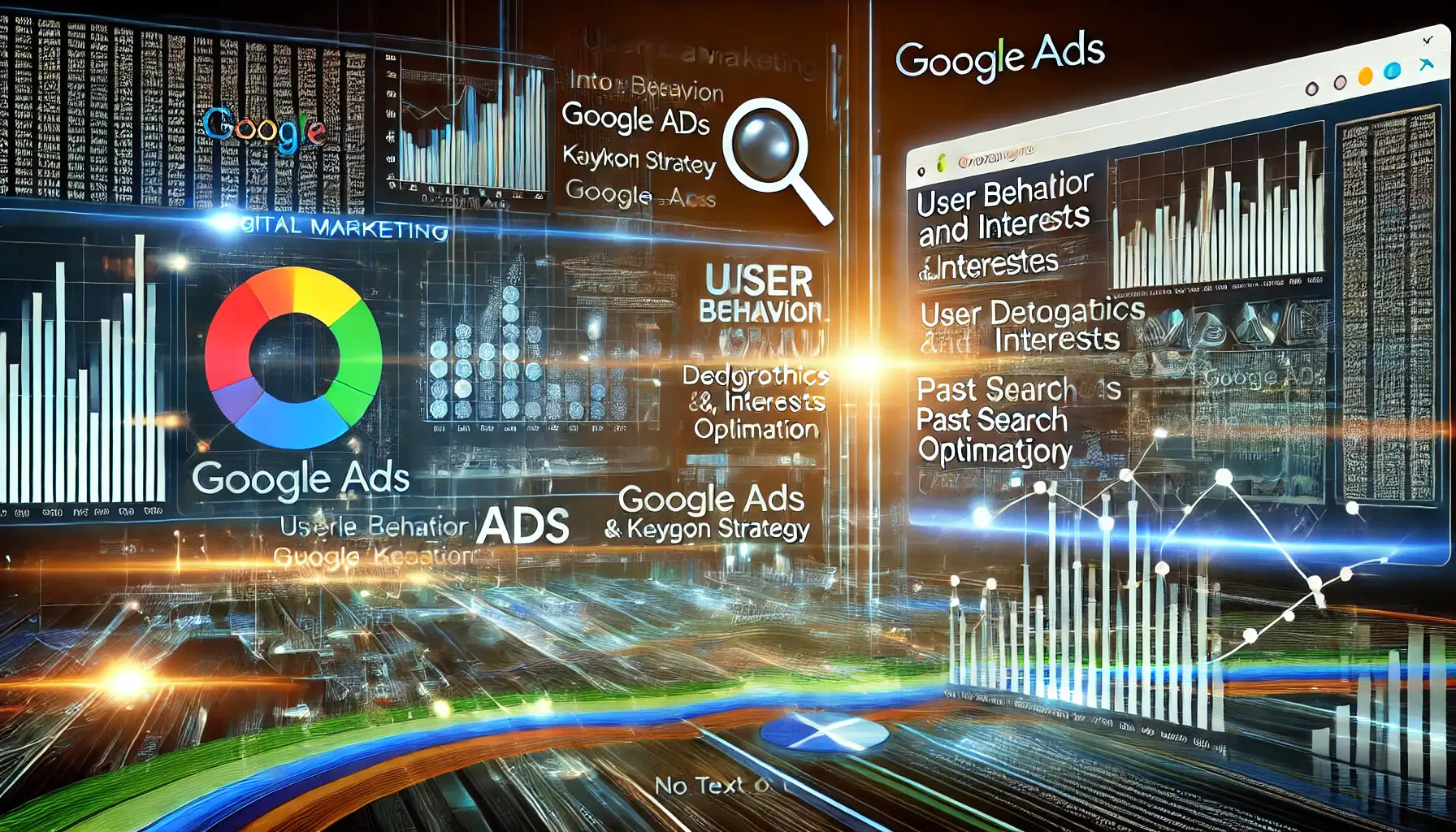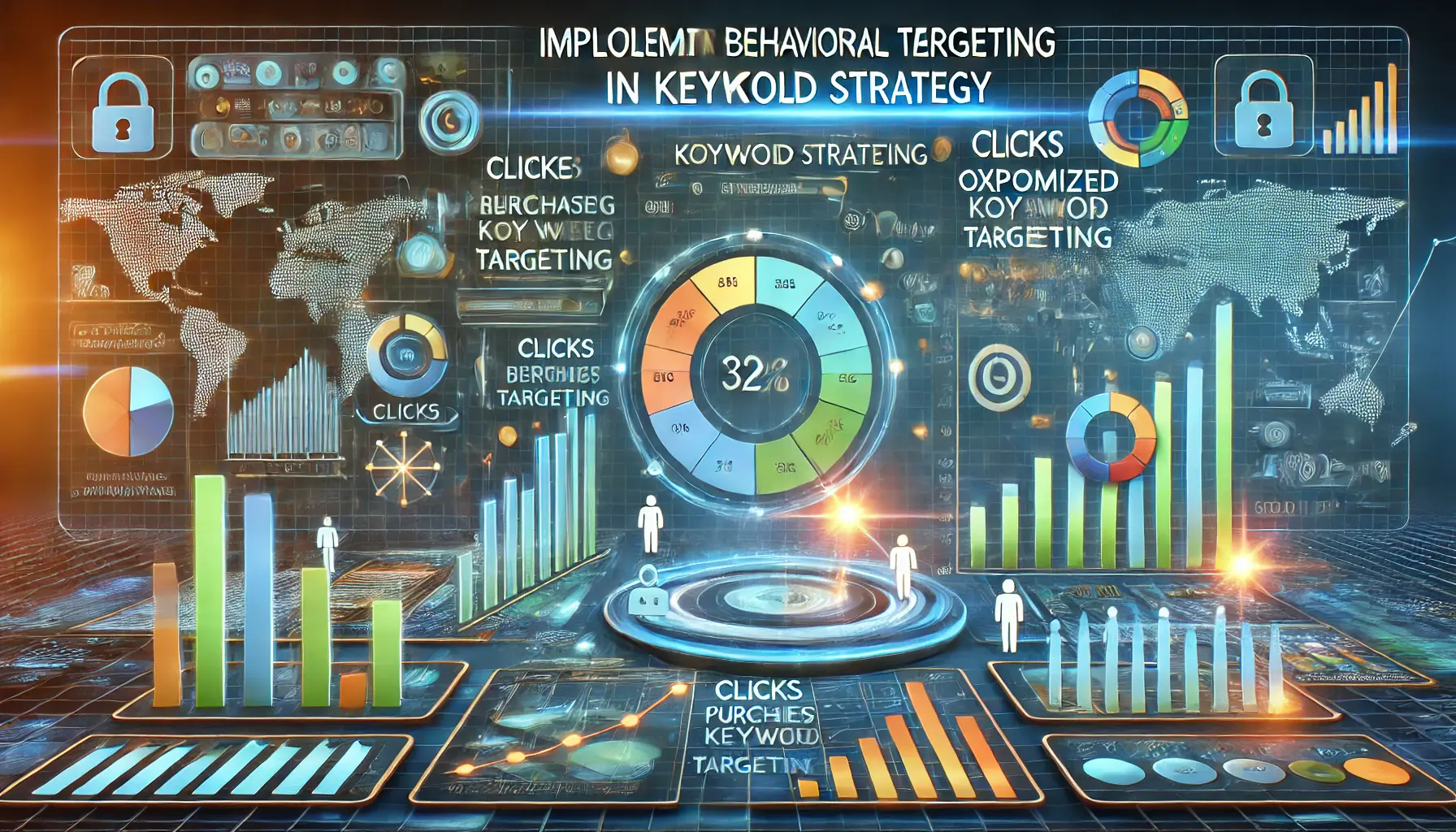In this ever-changing game of digital marketing, making sure to always outsmart one’s competition takes a little more than luck.
Here, strategies in keyword implementation, specifically regarding Google Ads, make much of a difference.
So, the year 2024 not only unfolds but carries with itself new approaches in the optimization of key terms.
This has modified the whole pattern businesses work with regarding audience targeting and engagements.
Whether you’re a seasoned marketer or just stepping into the Google Ads arena, understanding the latest trends can significantly enhance your campaign performance.
One of the most groundbreaking advancements in Google Ads is the integration of artificial intelligenceThe simulation of human intelligence processes by machines, especially computer systems..
AI-powered tools are transforming the way keywords are matched, campaigns are optimized, and budgets are managed.
In this section, we’ll explore how embracing AI-powered keyword matching can give your campaigns the competitive edge they need in 2024.
- Embracing AI-Powered Keyword Matching in Google Ads
- Maximizing Visual Search Opportunities in Google Ads
- Adapting to Voice Search in Google Ads Keyword Strategies
- Integrating User Behavior and Interests into Google Ads Keyword Strategies
- Optimizing for Mobile Search in Google Ads Keyword Strategies
- Mastering Keyword Strategies for Google Ads Success in 2024
- Frequently Asked Questions about Keyword Strategies in Google Ads
Embracing AI-Powered Keyword Matching in Google Ads
Artificial intelligence has revolutionized the digital marketing landscape, and keyword strategies are no exception.
By leveraging AI, marketers can optimize their Google Ads campaigns with precision and efficiency that were once unimaginable.
From smarter bidding to enhanced targeting, AI-powered tools are redefining the rules of keyword optimization.

Harnessing Machine Learning for Advanced Keyword Optimization.
Leveraging Machine Learning for Keyword Optimization
Machine learning algorithms analyze vast amounts of data to identify patterns and trends that humans might miss.
This capability allows Google Ads to predict user intent and serve ads that align more closely with what users are searching for.
The result?
Higher click-through rates and more relevant traffic to your site.
- Improved Accuracy: AI ensures that your ads are displayed for the most relevant searches, reducing wasted ad spend.
- Dynamic Adaptation: Machine learning adjusts your campaigns in real time, keeping them optimized as user behavior changes.
- Efficiency: With AI handling data analysis, you can focus on strategic decision-making rather than tedious manual tasks.

Striking the Perfect Balance Between Automation and Manual Oversight.
Balancing Automation with Manual Control
While AI offers remarkable capabilities, it’s essential to maintain a balance between automation and manual oversight.
Over-reliance on AI can sometimes lead to unintended results, such as targeting errors or overspending.
By periodically reviewing your campaigns and adjusting where necessary, you can ensure that AI complements your overall strategy rather than dictating it.
- Set Clear Goals: Define what you want to achieve with your campaigns, and use AI to support these objectives.
- Monitor Performance: Regularly review key metrics to ensure AI-driven adjustments align with your goals.
- Fine-Tune Keywords: Use your industry knowledge to refine keyword lists, ensuring they remain relevant.

Maximizing Efficiency with AI-Driven Bidding Strategies.
Implementing AI-Driven Bidding Strategies
Smart bidding is a game-changer for Google Ads campaigns.
By analyzing signals such as device type, location, time of day, and user intent, AI adjusts bids dynamically to maximize conversions.
This approach saves time and supports better ROI by ensuring budgets are allocated where they matter most.
- Optimize Conversions: Automatically allocate your budget to your top-performing keywords and ad placements.
- Cut Out Wastage: Using smart bidding minimizes wasted spend on low-performing ads, helping you get the most from your investment.
- Stay Ahead of the Competition: AI-driven competitive bids keep you ahead by responding to market conditions in near real-time.
As you embark on AI-powered keyword matching, remember that the key lies in integrating these tools with an overall strategy.
By leveraging AI thoughtfully, you can unlock new levels of efficiency and effectiveness in your Google Ads campaigns.
Leveraging AI in keyword matching significantly enhances ad performance by optimizing targeting and bidding strategies.
Stay ahead by embracing these tools for smarter campaign management.

Unlocking the Potential of Visual Search in Google Ads.
Maximizing Visual Search Opportunities in Google Ads
By 2024, visual search has started to become the talk of the digital town.
With Google LensA visual search tool by Google that identifies objects and provides relevant information using a camera or image. driving over 20 billion visual searches each month and 1 in every 4 of those searches being commercially intentful, there’s little doubt that consumers are fast moving toward image queries in product discovery and evaluation.
As a marketer, tapping into this trend can provide a substantial advantage in your Google Ads campaigns.

Enhancing Digital Marketing with Image and Video-Based Keywords.
Incorporating Image and Video-Based Keywords
To effectively leverage visual search, it’s essential to integrate image and video-based keywords into your strategy.
This involves optimizing your visual content to align with the search terms your target audience uses when seeking products or services similar to yours.
- Descriptive Filenames: Name your image and video files with relevant keywords to enhance searchability.
- Alt Text Optimization: Use clear, keyword-rich alt text to improve accessibility and search engine understanding of your visuals.
- Structured Data Markup: Implement schema markup to provide search engines with detailed information about your visual content.

Boosting Visual Search Visibility through Alt Text Optimization.
Optimizing Alt Text for Visual Search Visibility
Alt text serves a dual purpose: it aids visually impaired users and informs search engines about the content of your images.
Crafting concise, descriptive, and keyword-focused alt textA text description added to an image tag in HTML to describe the content of the image for accessibility and SEO purposes. can significantly boost your visibility in visual search results.
- Be Specific: Clearly describe the image content, including details that set it apart.
- Incorporate Keywords Naturally: Seamlessly include relevant keywords without keyword stuffing.
- Maintain Conciseness: Aim for alt text that is brief yet informative, typically under 125 characters.

Optimizing Visual Content by Aligning with Target Keywords.
Aligning Visual Content with Target Keywords
Ensuring that your visual content aligns with your target keywords is crucial for maximizing relevance and engagement.
- Consistent Branding: Use visuals that reflect your brand identity and resonate with your target audience.
- Relevant Imagery: Select images and videos that directly relate to the products or services you’re promoting.
- High-Quality Visuals: Invest in high-resolution, professional visuals to enhance user engagement and trust.
By focusing on these strategies, you can effectively harness the power of visual search in your Google Ads campaigns, staying ahead of the curve in the evolving digital landscape.
Visual search is transforming user behavior; integrating image-based keywords can boost engagement and conversions in 2024.
- Optimize alt text with relevant keywords.
- Use descriptive filenames for visuals.
- Enhance searchability with structured data markup.

Adapting Google Ads Keyword Strategies for Voice Search Optimization.
Adapting to Voice Search in Google Ads Keyword Strategies
With the increasing prevalence of voice-activated devices, voice search has become a significant factor in digital marketing.
In 2024, over 50% of the global population uses voice search daily, highlighting its importance in consumer behavior.
To stay competitive, it’s essential to adapt your Google Ads keyword strategies to accommodate this shift.

Optimizing Google Ads Campaigns with Conversational, Long-Tail Keywords.
Targeting Conversational, Long-Tail Keywords
Voice searches are typically more conversational and longer than text-based queries.
Users often phrase their searches as complete questions or natural language statements.
To align with this behavior, focus on incorporating conversational, long-tail keywords into your campaigns.
- Understand User Intent: Analyze common questions and phrases your audience uses when speaking, and integrate these into your keyword strategy.
- Use Natural Language: Optimize your ad copy to reflect the way people naturally speak, enhancing relevance to voice search queries.
- Implement Question-Based Keywords: Include keywords that mirror common questions, such as ‘How do I…’ or ‘What is the best way to…’.

Optimizing Local SEO with Location-Specific Keywords.
Integrating Location-Specific Keywords for Local SEO
Many voice searches have local intent, with users seeking information about nearby businesses or services.
This can be achieved through local SEO within your Google Ads strategy by adding location-based keywords.
This significantly boosts visibility for such queries.
- Optimized Google My Business: Fill out your profile and ensure the information is precise to help visibility.
- Use Local Phrases: Include key service keywords paired with location identifiers, such as ‘best coffee shop in [City Name]’.
- Encourage Reviews: Positive reviews can improve your local search ranking and enhance your appearance in voice search results.

Optimizing for Natural Language in Voice Search Queries.
Aligning with Natural Language Patterns in Voice Queries
Effectively capturing the growing volume of voice search traffic depends on proper keyword alignment with the natural language patterns used in voice-activated commands.
- Make Copy Conversational: Develop ad copy and landing pages that address popular queries in a natural, conversational tone.
- Utilize Schema Structured Data: Implement schema markup to help search engines better understand the context of your content, improving your chances of appearing in voice search results.
- Featured Snippet Focus: Optimize target content to appear in featured snippets, as most voice assistants directly read these results.
By tailoring your keyword strategies to accommodate voice search, you can stay ahead of the competition and ensure your campaigns resonate with the evolving behaviors of your audience.
Adapting to voice search with conversational, long-tail, and location-specific keywords is crucial for modern ad strategies.
- Include natural language phrases.
- Focus on questions like ‘How to’ or ‘What is.’
- Optimize for local search intent.

Optimizing Google Ads Strategies with User Behavior and Interests.
Integrating User Behavior and Interests into Google Ads Keyword Strategies
In 2024, understanding and leveraging user behavior and interests have become pivotal in crafting effective Google Ads keyword strategies.
By analyzing how users interact online, you can tailor your campaigns to meet their specific needs and preferences, enhancing engagement and conversion rates.

Enhancing Keyword Strategies with Audience Insights.
Utilizing Audience Insights for Targeted Keywords
Google’s Audience Insights tool provides detailed information about your audience’s demographics, interests, and online behaviors.
By analyzing this data, you can identify patterns that inform your keyword selection, ensuring your ads resonate with your target market.
- Identify High-Value Segments: Focus on audience segments that show a higher likelihood of conversion.
- Customize Ad Copy: Tailor your messaging to align with the specific interests and behaviors of your audience.
- Refine Keyword Lists: Use insights to select keywords that directly relate to your audience’s preferences and search habits.

Optimizing Keyword Strategies with Behavioral Targeting.
Implementing Behavioral Targeting in Keyword Strategy
Behavioral targeting involves analyzing users’ past behaviors to predict future actions.
By incorporating this approach into your keyword strategy, you can create more personalized and effective ad campaigns.
- Analyze Website Interactions: Study how users navigate your site to identify interests and inform keyword selection.
- Monitor Purchase History: Use past purchase data to predict future buying behavior and target relevant keywords.
- Track Engagement Metrics: Assess metrics like time on site and pages per visit to gauge user interest and refine your strategy.

Optimizing Keyword Strategies by Aligning with User Interests.
Aligning Keywords with User Interests for Enhanced Engagement
Aligning your keywords with user interests ensures that your ads are relevant and engaging, leading to higher click-through and conversion rates.
- Conduct Interest-Based Research: Use tools to discover what topics and products your audience is interested in.
- Develop Relevant Content: Create ad content that speaks directly to your audience’s interests and needs.
- Test and Optimize: Continuously test different keywords and ad copies to determine what resonates best with your audience.
By integrating user behavior and interests into your Google Ads keyword strategies, you can create more personalized and effective campaigns that drive better results in 2024.
Aligning keywords with user interests ensures relevance and drives engagement.
- Analyze audience insights for targeted keyword selection.
- Implement behavioral targeting based on user interactions.
- Test and optimize for continuous improvement.

Optimizing Google Ads for Mobile Search Behavior and Keyword Strategies.
Optimizing for Mobile Search in Google Ads Keyword Strategies
In 2024, mobile devices account for a significant portion of internet usage, making mobile optimization crucial for effective Google Ads keyword strategies.
Understanding mobile user behavior and tailoring your campaigns accordingly can enhance engagement and drive conversions.

Analyzing Mobile User Behavior for Optimized Marketing Strategies.
Understanding Mobile User Behavior
Mobile users often exhibit different search behaviors compared to desktop users.
They tend to perform quick searches, prefer concise information, and are often location-oriented.
Recognizing these patterns is essential for optimizing your keyword strategy.
- Shorter Queries: Mobile searches often involve shorter, more concise queries.
- Local Intent: Many mobile searches are location-based, seeking nearby services or products.
- Immediate Needs: Mobile users often search with immediate intent, looking for quick answers or solutions.

Optimizing Google Ads with Mobile-Specific Keywords.
Implementing Mobile-Specific Keywords
To effectively reach mobile users, incorporate mobile-specific keywords into your Google Ads campaigns.
This involves understanding the unique phrases and terms mobile users employ.
- Use Conversational Language: Mobile users often use natural, conversational language in their searches.
- Include Location Modifiers: Add location-based keywords to capture local search intent.
- Optimize for Voice Search: With the rise of voice assistants, include question-based and long-tail keywords that mirror spoken queries.

Optimizing Mobile Ads for Better Performance and Engagement.
Enhancing Mobile Ad Performance
Beyond keyword selection, optimizing your ads for mobile devices is crucial for performance.
- Responsive Ad Design: Ensure your ads are responsive and display correctly on various mobile devices.
- Fast Loading Landing Pages: Mobile users expect quick-loading pages; optimize your landing pages for speed.
- Clear Call-to-Actions: Use concise and compelling CTAs that are easy to interact with on mobile screens.
By focusing on mobile optimization in your Google Ads keyword strategies, you can effectively reach and engage the growing number of mobile users, driving better results for your campaigns in 2024.
Mobile optimization is vital as mobile users dominate internet searches in 2024.
- Prioritize responsive ad designs.
- Incorporate mobile-specific and location-based keywords.
- Optimize landing pages for fast loading.

Mastering Keyword Strategies for Google Ads in 2024.
Mastering Keyword Strategies for Google Ads Success in 2024
As we step into 2024, the ever-evolving landscape of digital marketing underlines the growing relevance of innovative keyword strategies in Google Ads.
From leveraging artificial intelligence to adapting to the rising dominance of mobile and voice search, success lies in embracing these advancements while tailoring your campaigns to meet user needs effectively.

Refining Advanced Keyword Strategies for Digital Marketing Success.
Key Takeaways from Advanced Keyword Strategies
Throughout this article, we’ve explored several essential areas to focus on for optimizing your Google Ads campaigns.
Here’s a quick recap of the highlights:
- AI Integration: Harness the power of artificial intelligence for precise keyword matching, smart bidding, and real-time campaign adjustments.
- Visual Search Optimization: Incorporate image and video-based keywords, optimize alt text, and align visual content with target keywords to capture visual search traffic.
- Voice Search Adaptation: Use conversational, long-tail keywords and location-specific terms to align with natural language patterns in voice queries.
- User Behavior Alignment: Analyze audience insights and behaviors to refine keyword selection, ensuring relevance and enhanced engagement.
- Mobile Optimization: Prioritize mobile-friendly keyword strategies and responsive ad designs to cater to the growing number of mobile users.

Sustaining Success with Evolving Marketing Strategies.
The Road Ahead: Sustaining Success with Evolving Strategies
Digital marketing trends are constantly evolving, and so should your approach to keyword strategies.
Regularly analyzing data, staying informed about emerging technologies, and experimenting with new tactics will provide an edge in the competitive landscape of paid media.
By implementing the practices listed in this article and tailoring them to your specific business goals, you can unlock the potential of Google Ads to drive meaningful engagement, increase conversions, and achieve long-term success in 2024 and beyond.
Success in 2024 depends on adopting innovative strategies like AI integration, visual search optimization, and adapting to mobile and voice search trends.
- Experiment with new tactics for sustained results.
- Regularly analyze performance data.
- Tailor strategies to meet evolving user needs.

Addressing Common Queries About Google Ads Keyword Strategies.
Your campaigns can be managed by an agency specialized in Google Ads, check out our service page.
Frequently Asked Questions about Keyword Strategies in Google Ads
As digital marketing evolves, understanding keyword strategies in Google Ads is essential.
Here are some common questions and concise answers to guide you.
Broad match keywords allow your ads to appear for searches that include any word in your keyphrase, in any order, including synonyms and related searches.
This approach can increase reach but requires careful management to maintain relevance.
AI integration in Google Ads enables precise keyword matching, smart biddingAn automated bidding strategy in Google Ads that uses machine learning to optimize for conversions or conversion value., and real-time campaign adjustments, improving ad relevance and performance by analyzing vast amounts of data efficiently.
With the majority of searches occurring on mobile devices, optimizing keyword strategies for mobile ensures your ads effectively reach and engage users, enhancing campaign performance and user experience.
To adapt for voice search, incorporate conversational, long-tail keywords and location-specific terms that mirror natural language patterns, aligning your ads with the way users speak their queries.












